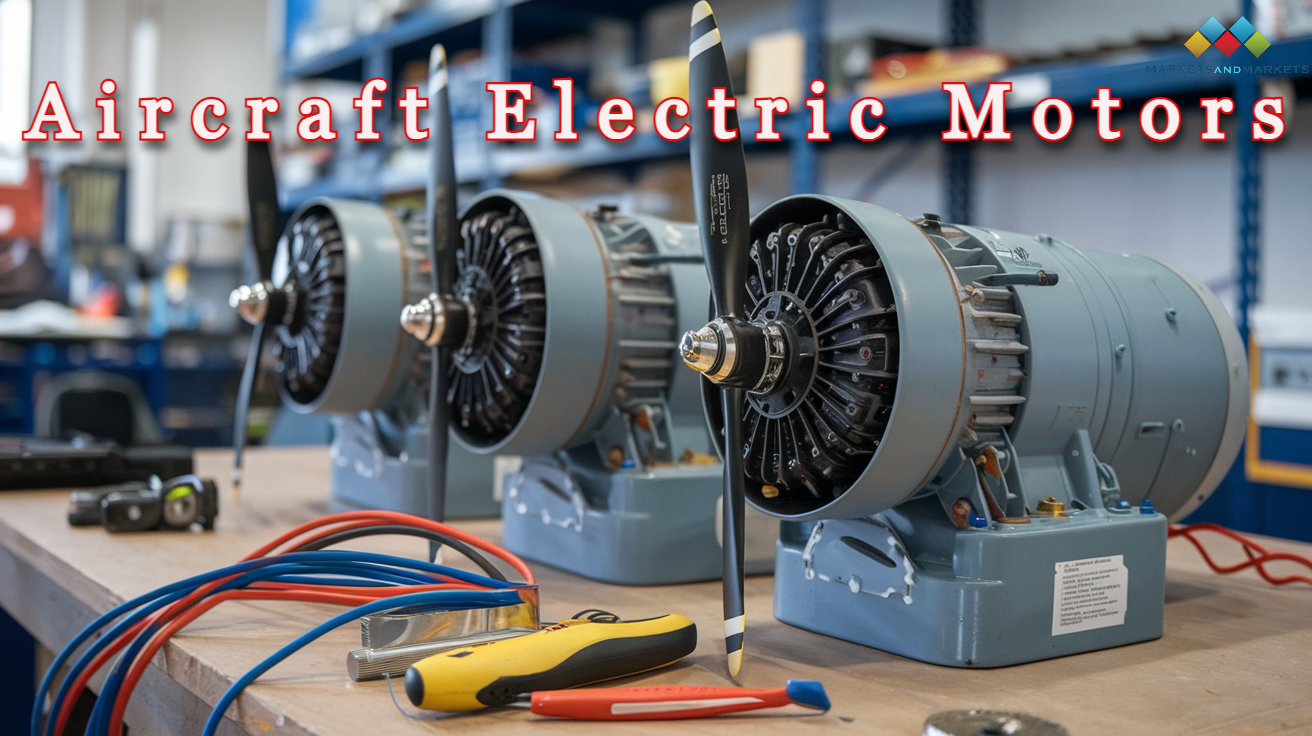The Aircraft Electric Motors Industry is crucial to the broader aerospace sector, which is increasingly focusing on electrification. Electric motors in aircraft are used in a variety of systems, including propulsion, actuators, landing gear, and environmental control systems. The push for more electric aircraft (MEA) and eventually all-electric or hybrid-electric aircraft has driven innovation in this field. This is seen as a key strategy to reduce carbon emissions, improve fuel efficiency, and lower operating costs.
Market Size and Share:
The global aircraft electric motors market Size is projected to grow from USD 8.2 billion in 2022 to USD 12.9 billion by 2027, at a CAGR of 9.4% from 2022 to 2027. The market’s growth is supported by increasing demand for new aircraft, advancements in electric propulsion technology, and the aerospace industry’s focus on sustainability.
Key Market Players:
Rolls-Royce: A leader in electric propulsion systems, particularly for small aircraft and urban air mobility (UAM).
Safran: Focuses on electric motor systems for various aircraft applications, including landing gear and flight controls.
Honeywell International: Active in developing electric motors for aircraft environmental control systems and other auxiliary functions.
Regional Insights:
North America: Dominates the market, accounting for about 40% of the global share, driven by the presence of major aerospace companies and ongoing R&D in electric aircraft.
Europe: Another significant region, supported by stringent environmental regulations and initiatives like the European Green Deal.
Asia-Pacific: Expected to see the highest growth rate due to the rapid expansion of the aviation industry, particularly in China and India.
Trends Driving the Industry:
Electrification of Aircraft: The shift toward more electric aircraft (MEA) is a major trend, with a focus on reducing reliance on traditional hydraulic and pneumatic systems. This trend is driven by the need for fuel efficiency, reduced emissions, and lower maintenance costs.
Urban Air Mobility (UAM): The rise of UAM, involving electric vertical takeoff and landing (eVTOL) aircraft, is a significant driver. Companies are developing small electric motors specifically designed for these vehicles, which are expected to revolutionize urban transportation.
Advancements in Motor Technology: Technological advancements, such as the development of high-power-density electric motors and the use of advanced materials like carbon composites, are improving the efficiency and performance of aircraft electric motors. The integration of electric motors with advanced power electronics and energy storage systems is also a key trend.
Sustainability Initiatives: The aerospace industry’s commitment to sustainability is pushing the adoption of electric motors. Electric propulsion systems are seen as a way to significantly reduce the carbon footprint of aviation.
Opportunities:
Development of Hybrid-Electric Aircraft: The development of hybrid-electric aircraft presents a significant opportunity for the electric motors market. These aircraft use electric motors in combination with traditional engines to improve fuel efficiency and reduce emissions. Companies investing in this technology are likely to benefit from early market entry.
Retrofit Market: The growing trend of retrofitting older aircraft with electric systems offers a significant opportunity. This includes the replacement of traditional hydraulic and pneumatic systems with electric alternatives, which can extend the life of the aircraft and improve its efficiency.
Emerging Markets: There is a growing opportunity in emerging markets, particularly in Asia-Pacific, where the aviation industry is expanding rapidly. The demand for new aircraft in these regions is expected to drive the growth of the electric motors market.
R&D and Collaboration: Increased investment in R&D, along with collaborations between aerospace companies, motor manufacturers, and research institutions, is likely to yield innovative solutions. This includes the development of next-generation electric motors and propulsion systems.
Growth Analysis:
The growth of the aircraft electric motors industry is primarily driven by the increasing adoption of electric and hybrid-electric aircraft, the rise of UAM, and the industry’s focus on reducing carbon emissions. The ongoing advancements in electric motor technology, coupled with supportive government regulations and incentives, are also playing a critical role.
Challenges:
High Costs: The initial cost of developing and implementing electric motor systems in aircraft remains high, which can be a barrier to adoption.
Technical Barriers: There are still technical challenges related to energy density, power output, and the integration of electric motors with existing aircraft systems.
Infrastructure: The lack of adequate infrastructure for electric aircraft, such as charging stations and maintenance facilities, is another challenge that needs to be addressed.
Future Outlook: The aircraft electric motors industry is poised for significant growth over the next decade. The ongoing shift toward electrification in the aerospace sector, combined with advancements in motor technology and the push for sustainability, will likely continue to drive demand. Companies that can innovate and overcome the technical and cost-related challenges will be well-positioned to capitalize on the opportunities in this market.

